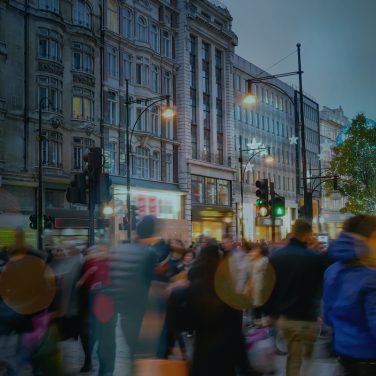The revolution of IoT means cities are already smart, the next step is to make them responsive and to do that actionable insights are key…
‘Smart City’ is a term most people will probably have heard, whether in the industry or not. In the past few years the concept has become somewhat of an enigma that most understand but struggle to define; in other words, the ‘smart city’ is a paradigm for aspirational living and how we would like future communities to behave. So how can city leaders guide their teams on creating a ‘smart city’ model?
The answer is to start with people. Many smart cities are built with technology driving the data that is gathered and applications that are used, but how is this beneficial to citizens? For example, a smart street lighting network might improve efficiencies for the council, but what’s in it for the citizen? City leaders must understand the individual pain-points of their community and pin-down the changes they must make to enhance public services, before implementing city-wide changes.
A citizen-centric approach
Taking a citizen-centric approach means that each objective set within a smart city plan considers how changes might enhance the quality of life for residents, or how city dwellers can benefit from improvements. It keeps the end-user at the heart and therefore shapes the way the borough needs to behave.
Issues such as mobility, health services and waste are all re-occurring pain points for residents and there are many ways city leaders have made good headway to improve this. Smart streetlights might improve efficiencies, but they can do more to truly enhance the quality of life for citizens. Sensor integrated luminaires go further than simply switching off lights; they can monitor traffic levels and sense air quality. Data that is generated can offer key insight into the measures a city must take in order to help citizens – this drives the search for suitable technology and pragmatic development.
Data drives development
Thanks to technological enhancements, we now have more data around us than ever before. From the amount of people using public transport, to the number of road users at any given point of the day, this data can be used to define the way a city behaves and diagnose necessary changes. However, most of the data gathered from cities is used in a siloed approach, where departmental bodies use it to enhance segmented services.
Of course, this is an example of data driving development. But, as these services all ultimately work together within an ecosystem, this fragmented approach can mean it’s often hard for city leaders to see the bigger picture and how physical evidence from the street can be used to improve services as a whole.
It’s important that the data representing a number of variables is used holistically in order to understand the trends and anomalies in an entire urban space. Here applications can be developed to truly enhance the citizen services that are most crucial within the community. This marks the difference between a smart city and a responsive one.
Smart cities vs responsive cities
Most cities and towns are already smart in some way; they have intelligent infrastructure that helps them tackle many urban problems. This started with the streetlight, which has been identified as a valuable digital urban asset, helping many cities take control over energy efficiencies, light pollution, public security and road safety. But, these smart enhancements mean nothing if they never become intuitive to the changing needs of the community.
Granted, the infrastructure will utilise the latest technology to track a number of variables from the streetlight, but it needs to become sentient in order to truly energise future communities. Responsive cities utilise the data available throughout an entire urban space to ensure insights are gathered and actioned upon; they must also respond to real-time events in a timely and beneficial manner.
From a user perspective, cities must enhance the way we live, work and play and there must be a noticeable benefit to those of us who use citizen services each and every day. Considering this, cities should take a three pronged approach to the way they use digital urban assets. They must monitor and control assets and data within the city landscape, they must then process and evaluate the resulting data and then action upon the insights gathered, in real-time.
Actionable insights
Actionable Insights, then, relate to responsive cities and how the data that is collected each and every day is processed to make things happen. Take the streetlight for example; using sensors it can identify faults and events that might affect the way it functions. So what? To a member of the general public, how does this enhance their daily life?
Imagine, then, that the streetlight was displaying faults because it had been knocked over – this would cause chaos within a busy town-centre road, with congestion and citizen safety a key concern. Using data gathered from this lamppost, the actionable insight would therefore be to close the route affected by the fallen column and warn motorists about potential delays and alternative routes, with dynamic signs and app alerts advising on expected downtime with updates on when issues might be resolved.
Dynamic street furniture, consequently, helps to enhance the way citizen’s move through their city by providing immediate alerts to ensure minimum impact to their daily lives. Cities need to stay relevant and for this, inter-city communication, digitalisation and responsiveness are key. Future communities will, therefore, be more energised and engaged – not only with their city, but with one another.
Actionable insights unlock the potential of tomorrow’s cities – the data is already around us, the challenge is using that in a meaningful way that will help future communities.


